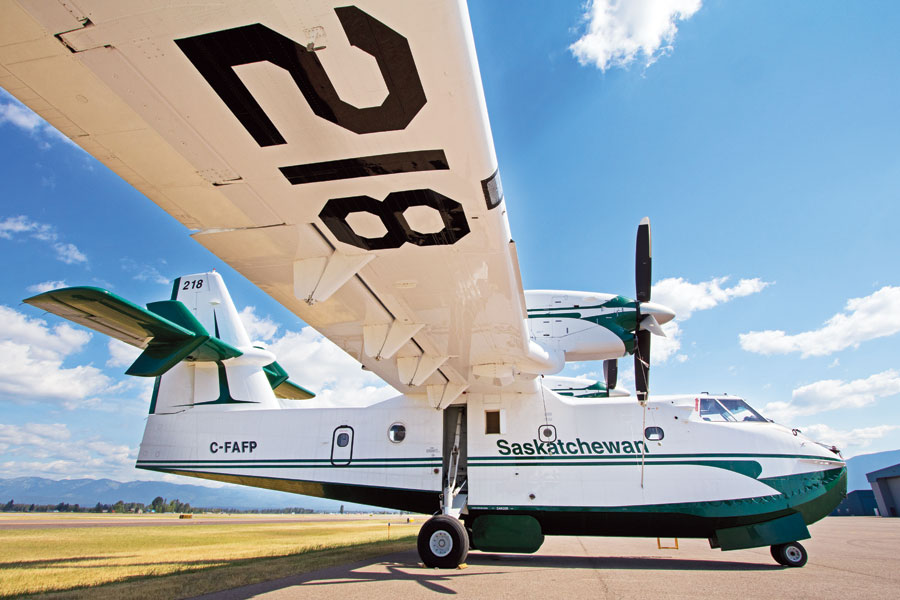While the thought of fire is often accompanied by the image of a bright red fire truck — although in these parts it’s just as likely to arrive in U.S. Forest Service green — plenty of other unique vehicles have been brought to Northwest Montana in recent weeks to combat local wildfires from the air and the rails.
Two of the biggest tools available to local firefighters are two CL-215T “Super Scooper” planes from Saskatchewan and were based at Glacier Park International Airport for three weeks in August.
The planes were loaned to the United States as part of the Northwest Fire Compact, a mutual aid agreement between Montana, Idaho, Washington, Oregon and Alaska and the provinces of Saskatchewan Alberta, British Columbia, Yukon Territory and the Northwest Territories.
“Three years ago, Saskatchewan was hit with devastating wildfires and support from our partners was extraordinary. We are happy to return the favor through our resource-sharing agreements while we are in a position to do so,” Corey Rhiendel, communications consultant for the Government of Saskatchewan, wrote in an email.
The planes have a cruising speed of 205 miles per hour and can fill its tanks with 1,400 gallons of water from a lake or large body of water in less than 10 seconds. The water is mixed with foam to increase the effectiveness of the water drop.
Along with the two scooper planes, a smaller plane called the “Birddog” guides the tankers, maintains airspace safety and communicates with firefighters on the ground to coordinate water drops.
From Aug. 6 to 27, the two planes flew 12 missions; two missions in Idaho and the rest in Montana, mostly in Glacier National Park. The planes have since returned for Canada for annual maintenance.
Another unique piece of equipment on standby is BNSF Railway’s fire train, dubbed “Sparky” by local railroad employees. Each car on the fire train can carry upwards of 20,000 gallons of water. While some of the cars just carry water, other cars are actually outfitted with hoses and water canons to spray water on fires or spray down an area to protect railroad bridges and other infrastructure.
Every year, BNSF invites local firefighters to the yard in Whitefish so they can familiarize themselves with the equipment. If a fire starts close to the tracks — like the Paola Ridge Fire near Essex — the fire train can move into position to help local firefighters. BNSF spokesperson Ross Lane said so far this year the fire train has not been called upon but it is ready if the call comes. The last time the fire train was used was in 2015 to fight the Sheep Fire. At the time, BNSF was called upon to move firefighters and other personnel to the fire line because it was located right along the tracks.
“A lot of our routes travel through remote areas that are inaccessible by road and so the railroad is the safest and most effective way to get equipment into some areas,” Lane said.
Lane said BNSF maintains fire trains all across its system and that they are moved throughout the year, depending on fire danger.
